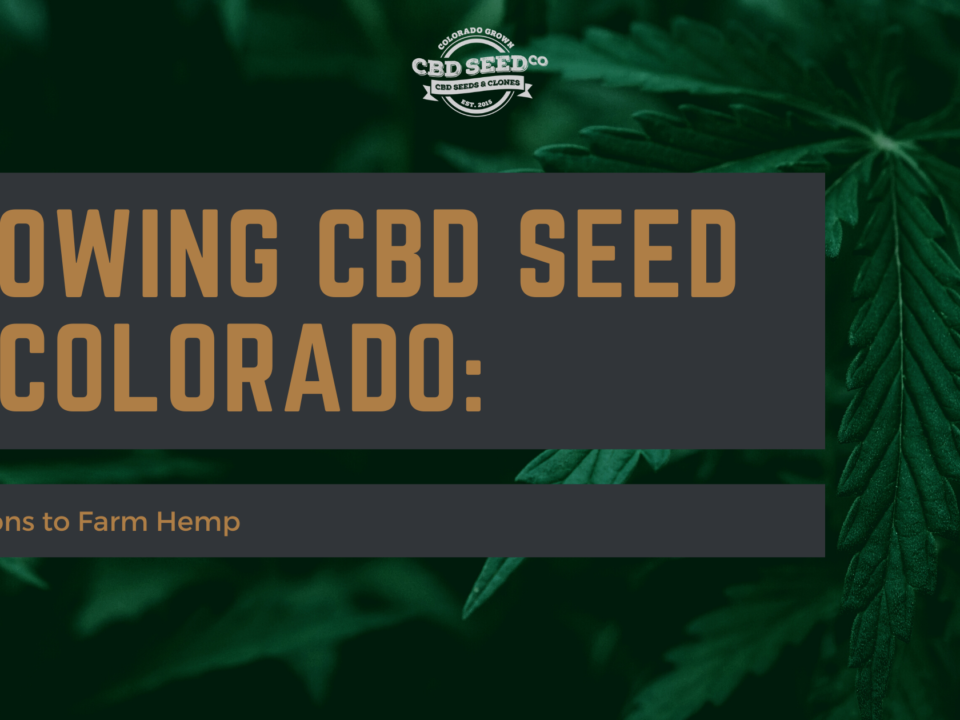How to Prevent and Treat Mold When Planting CBD Seed In Arkansas

How to Prevent Mold When Planting CBD Seed In Alaska
October 27, 2020
Tips for Buying CBD Seed In California
October 27, 2020Hemp is considerably more resilient when compared to other cash crops when it comes to pests and disease. However, hemp is still susceptible to mold growth which can cause detrimental issues. For farmers planting CBD seed in Arkansas, mold was a major obstacle that affected profit returns and biomass yields last growing season. Don’t let mold affect your hemp farm this year– here are our tips for how to prevent and treat hemp mold.
Understanding Mold Biology and the Impact on Hemp
Mold is characterized as a fungus that transports through tiny spores that can move throughout the air and land on surfaces. Mold serves as a decomposer in the wild where it helps break down different organic materials to return the various nutrients back to the Earth. While mold is very important in the wild, it can devastate your hemp crops. So, what does mold need to in order to grow? It requires these four ingredients: darkness, stagnant air, humidity, and moisture. The best way to create your mold prevention strategy is to focus on eliminating these ingredients that are needed.
The Most Common Hemp Molds In Arkansas
There are hundreds of thousands of mold species in existence but most molds are actually not harmful to hemp. Here are the molds you’ll want to look out for on your Arkansas hemp farm:
- Gray mold: Hemp plants with open wounds are more susceptible to gray mold. Gray mold usually enters through these openings but can infect undamaged, healthy plants as well. The telltale signs of gray mold are yellow discoloration on the stems and gray-brown/brown spots. Gray mold can destroy hemp flowers and pose serious health risks if ingested or smoked.
- White mold: Farmers can spot white mold by the dark brown lesions it leaves on stems. These wounds can easily break, leading to vulnerable, skinny plants.
- Powdery mildew: If you see something that resembles white flour on your plants, then you might have powdery mildew. Powdery mildew is prevalent in Arkansas due to the hot, humid climate. Farmers here need to ensure proper spacing for their hemp plants in order to produce better airflow and minimize the risk.
- Fusarium: Fusarium is one of the scariest molds any hemp farmer can encounter due to its capability of destroying an entire hemp farm and how fast it can set on. This mold enters through the bottoms of your plant, attacking the root systems. Once the visible symptoms are there, it’s usually too late to fix this problem. Hemp insurance is a great thing to consider for protecting against this.
- Sooty mold: Sooty mold resembles soot that covers the leaves of your plants. This mold actually attacks the insects that are housed within your hemp plants and doesn’t directly impact hemp. However, since it covers the leaves, it can disrupt the photosynthesis process which poses growth and health concerns for hemp plants.
Mold Prevention Tips for Planting CBD Seed In Arkansas Hemp Farms
The more you can control your environment the better for your crops. That’s why greenhouses are recommended for outdoor operations. However, if finances and infrastructure are limited on your farm, you’ll want to stick with a mold prevention plan and be proactive with your strategy.
Outdoor Hemp Mold Prevention Strategy
- Plant your CBD seed in the most direct sunlight possible
- Consider better spacing when planting CBD seed for increased airflow
- Cover your crops with tarps if heavy rain is expected
- Set up fans after rainstorms to help dry your plants
- Install a drip irrigation system if possible
- Inspect your hemp daily
Indoor Hemp Mold Prevention Strategy
- Add a dehumidifier to manage humidity levels
- Create an effective exhaust system
- Install a hygrometer for monitoring humidity and temperatures
- Replace your HVAC filters every month
- Invest in high-quality HEPA filters
- Defoliate hemp plants when they’re mature– cut bottom branches and buds to improve airflow and focus energy on the top buds
- Consider antimicrobial surface film and/or flooring
- Inspect your hemp daily
CBD Hemp Mold Treatment
Mold treatment will vary based on the type of mold you have and the severity. If you have mild mold with only a few visible spots, the plant may be saved if you defoliate the affected leaves. If mold has significantly impacted your hemp plant, you may have to remove the entire plant and watch other crops nearby for potential infection. Speaking with fellow hemp farmers can also help provide the guidance you need.
Invest In Mold-Resistant CBD Seed for Your Arkansas Farm
CBD Seed Co. is honored to be the trusted CBD seed supplier serving the state of Arkansas. We’ve spent over five years in research and development to create our high-quality genetics that is resilient to pests and disease. For more information regarding how to prevent and treat hemp mold, please contact us!





